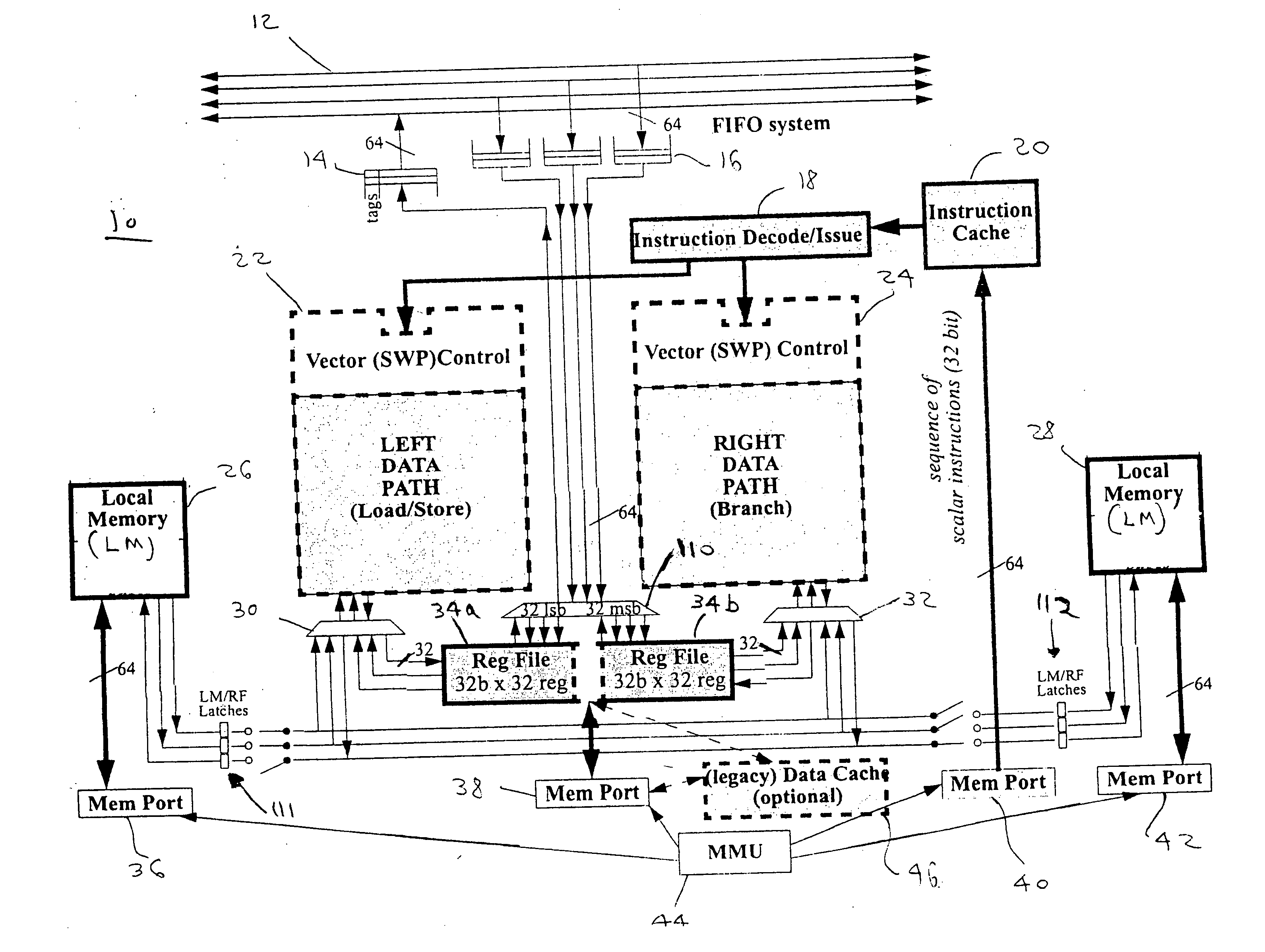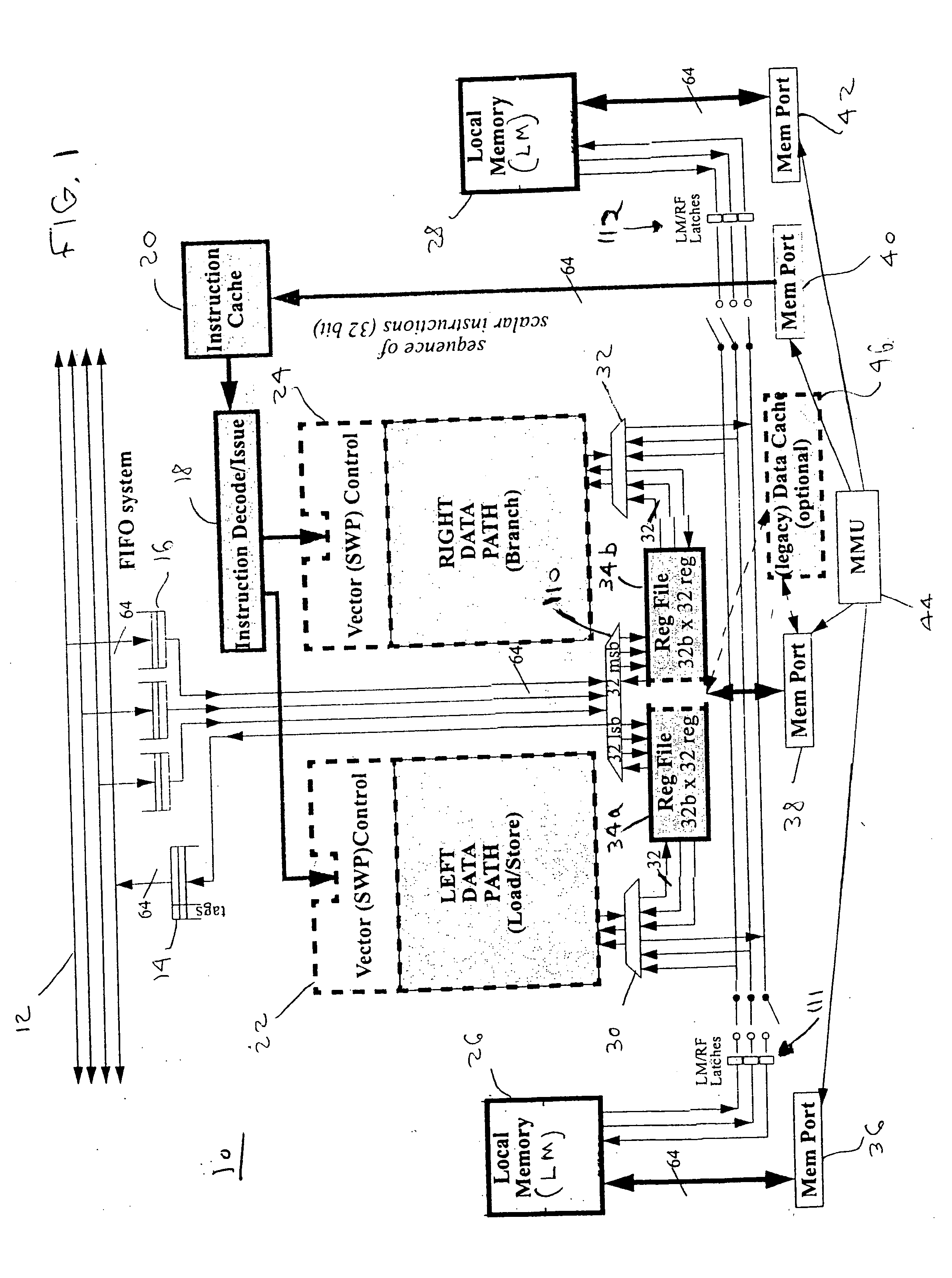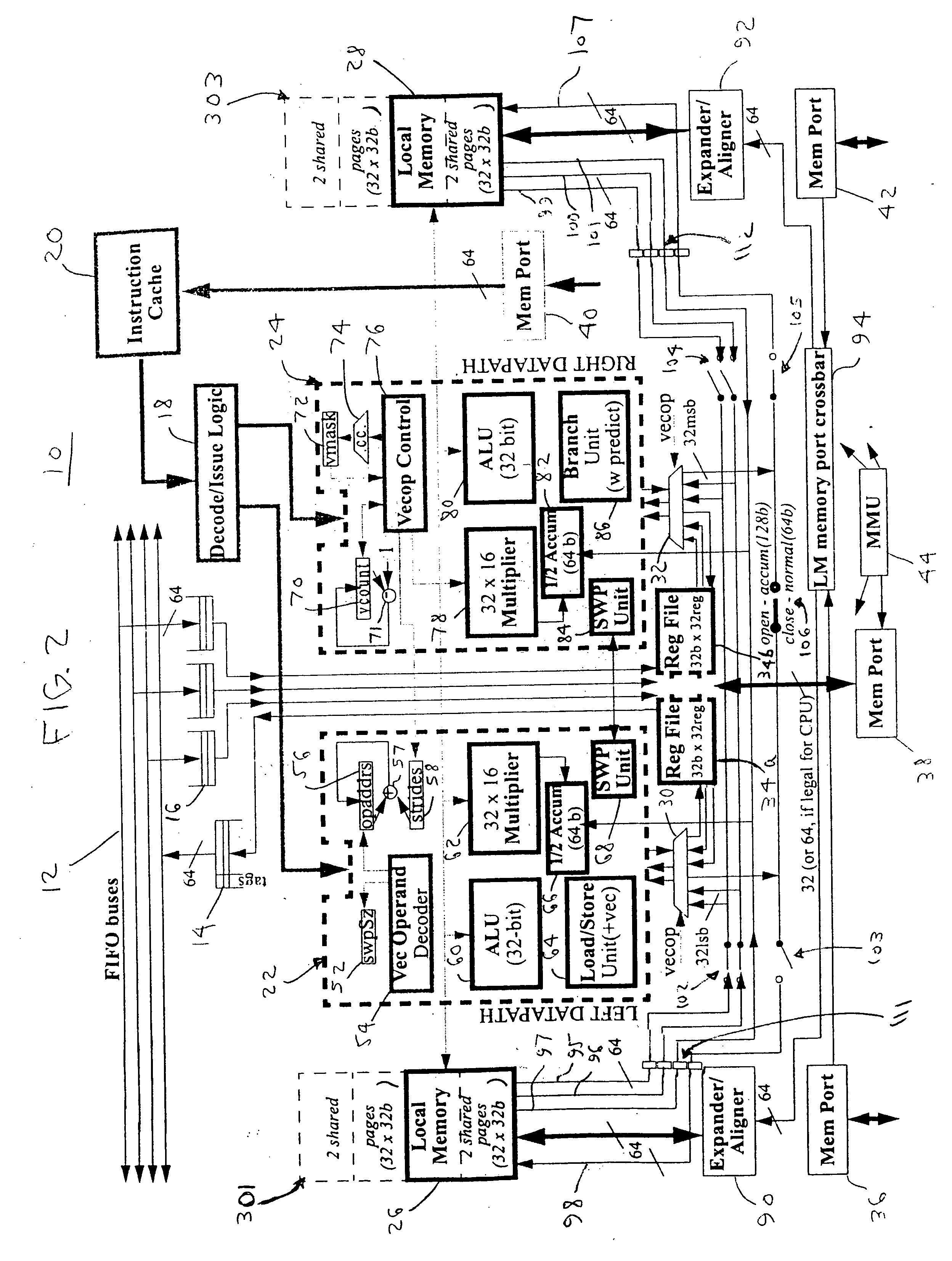Chip multiprocessor for media applications
a multi-processor and media technology, applied in the field of data processing systems, can solve the problems of cpus performance increase, lack of scalability of multi-issue uni-processor architecture, and soon reaching the point of diminishing returns, and scaling problems began to appear
- Summary
- Abstract
- Description
- Claims
- Application Information
AI Technical Summary
Problems solved by technology
Method used
Image
Examples
Embodiment Construction
[0025] Referring to FIG. 1, there is shown a block diagram of a central processing unit (CPU), generally designated as 10. CPU 10 is a two-issue-super-scalar (2i-SS) instruction processor-core capable of executing multiple scalar instructions simultaneously or executing one vector instruction. A left data path processor, generally designated as 22, and a right data path processor, generally designated as 24, receive scalar or vector instructions from instruction decoder 18.
[0026] Instruction cache 20 stores read-out instructions, received from memory port 40 (accessing main memory), and provides them to instruction decoder 18. The instructions are decoded by decoder 18, which generates signals for the execution of each instruction, for example signals for controlling sub-word parallelism (SWP) within processors 22 and 24 and signals for transferring the contents of fields of the instruction to other circuits within these processors.
[0027] CPU 10 includes an internal register file ...
PUM
 Login to View More
Login to View More Abstract
Description
Claims
Application Information
 Login to View More
Login to View More - R&D
- Intellectual Property
- Life Sciences
- Materials
- Tech Scout
- Unparalleled Data Quality
- Higher Quality Content
- 60% Fewer Hallucinations
Browse by: Latest US Patents, China's latest patents, Technical Efficacy Thesaurus, Application Domain, Technology Topic, Popular Technical Reports.
© 2025 PatSnap. All rights reserved.Legal|Privacy policy|Modern Slavery Act Transparency Statement|Sitemap|About US| Contact US: help@patsnap.com



